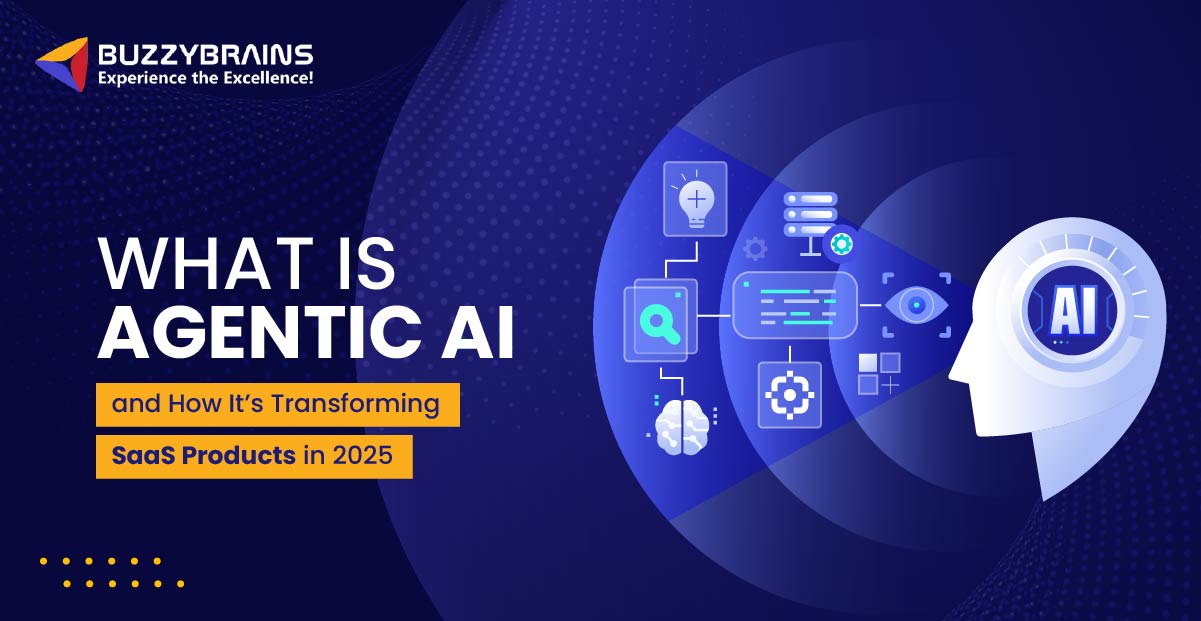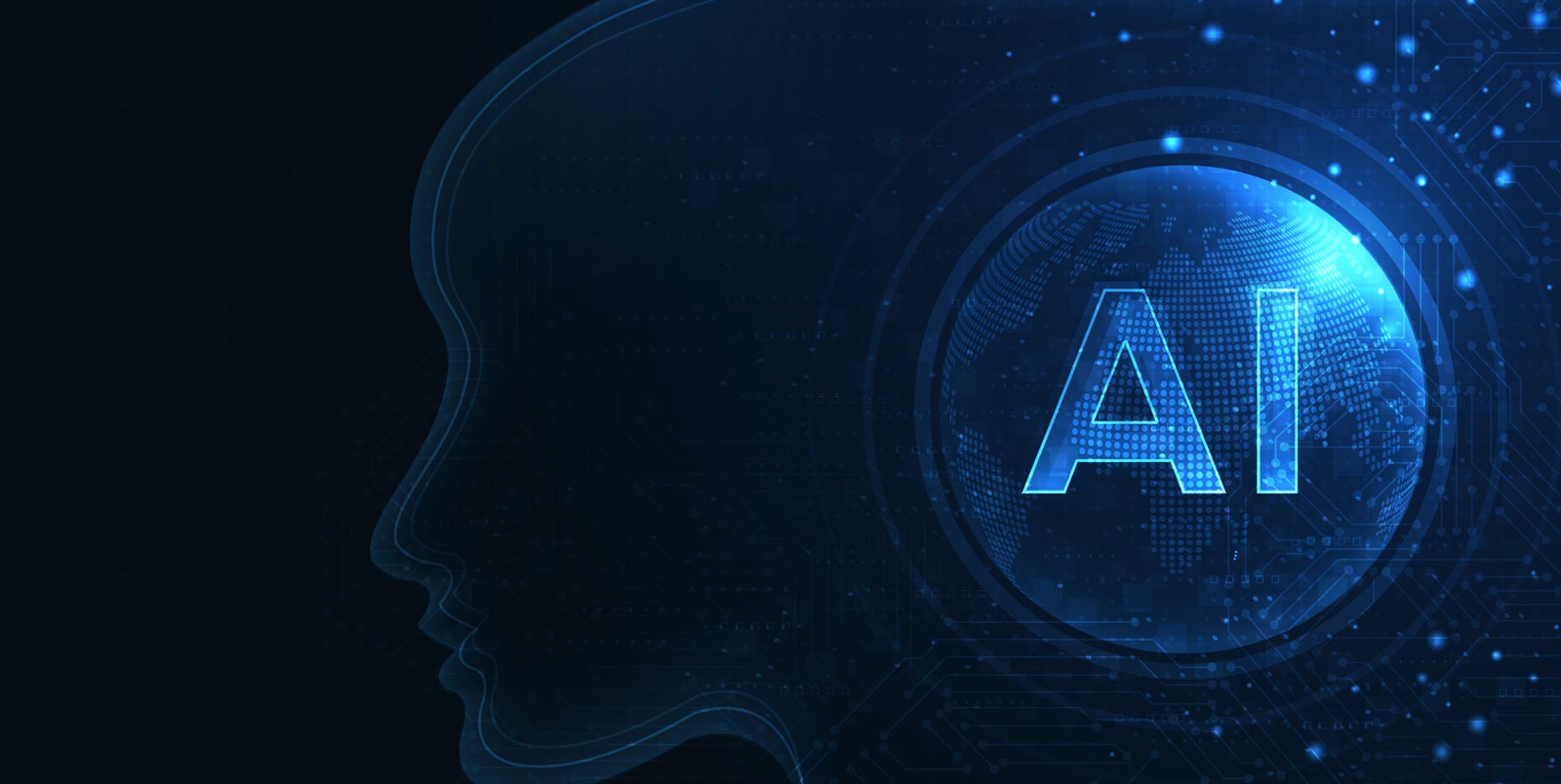What is Agentic AI and How It’s Transforming SaaS Products in 2025

Artificial Intelligence (AI) has come a long way over the past decade. From simple automation to generating content, AI is now evolving into something even more powerful—Agentic AI.
In 2025, this new wave of AI is making serious waves in the Software-as-a-Service (SaaS) industry. It’s not just assisting anymore. It’s acting with purpose. It’s making decisions. It’s thinking in ways that seem almost human.
Let’s dive into what Agentic AI really is—and how it’s changing the face of SaaS as we know it.
- What is Agentic AI?
- How Agentic AI Differs from Other AI Models?
- How Does Agentic AI Work?
- What are the Advantages of Agentic AI?
- What are the Disadvantages of Agentic AI?
- Real-World Applications of Agentic AI in SaaS
- Benefits of Agentic AI for SaaS Companies
- Challenges for Agentic AI Systems for SaaS Products
- The Future Outlook of Agentic AI in SaaS
- FAQs About Agentic AI
- Conclusion
- Transform Your SaaS with Agentic AI – Partner with BuzzyBrains
What is Agentic AI?
Agentic AI refers to artificial intelligence systems that can autonomously make decisions, set goals, and take actions to achieve them, without constant human input.
In simple terms, Agentic AI is goal-driven. Unlike traditional AI, it doesn’t just follow instructions. It figures out the best way to complete tasks on its own.
According to a 2024 Stanford AI Index report, 75% of enterprise AI applications by the end of 2025 are expected to include some form of agentic capabilities. This number is growing rapidly, especially in SaaS platforms.
Another survey by Deloitte shows that 64% of SaaS companies are either experimenting with or deploying agent-based systems to improve productivity and automation.
This isn’t a futuristic concept anymore. It’s happening now.
How Agentic AI Differs from Other AI Models?
AI is a broad term. We’ve all seen machine learning models, chatbots, and image generators. But Agentic AI stands out because of one key trait: autonomy.
While traditional models need prompts and boundaries, agentic systems decide and act on their own. They plan, prioritize, and execute.
This means SaaS tools with Agentic AI can work independently toward business goals.
Take customer support tools, for example. A generative AI might write a reply. But an Agentic AI will decide when to follow up, escalate, or even initiate outreach—all by itself.
This makes it a game-changer for many industries, especially those relying on continuous, adaptive decision-making.
Agentic AI vs Traditional AI
Agentic AI represents a leap beyond rules-based or predictive models.
| Feature | Traditional AI | Agentic AI |
| Task Execution | Requires human-defined rules | Self-directed task execution |
| Decision-Making | Follows pre-set instructions | Makes independent decisions |
| Goal-Oriented | Executes single tasks | Pursues goals across tasks |
| Adaptability | Limited to trained data | Learns and adapts in real-time |
| Human Supervision Needed | Frequently | Minimal or conditional |
| Application Scope | Narrow and defined | Broad and dynamic |
| Example Use Case | Image recognition, spam filters | Virtual agents, autonomous workflows |
Agentic AI vs Generative AI
Both terms are trending in 2025. But they’re not the same.
| Feature | Generative AI | Agentic AI |
| Output | Generates content (text, image, code) | Performs actions toward a goal |
| User Input Required | Needs prompts to function | Functions with minimal user input |
| Planning Ability | Lacks long-term planning | Can plan multi-step strategies |
| Example Tool | ChatGPT, Midjourney, GitHub Copilot | AutoGPT, BabyAGI, Devin AI |
| Goal Execution | No intrinsic goal setting | Can set and achieve its own goals |
| Autonomy | Low to moderate | High |
So, while generative AI helps create, agentic AI helps act.
How Does Agentic AI Work?
The process of Agentic AI involves several layers. Each plays a crucial role in enabling autonomy.
1. Goal Identification
Agentic AI starts by identifying a clear goal. This can be defined by a human or inferred from the system context.
For example, if the goal is “increase customer retention,” the system understands this and seeks actions to achieve it.
2. Planning and Reasoning
Once the goal is set, Agentic AI plans a sequence of actions. It uses reasoning models to prioritize steps, allocate resources, and set timelines.
3. Tool Use and Integration
Agentic AI uses available tools—APIs, internal databases, third-party apps—to complete tasks. It knows how and when to use each one.
For instance, it might pull CRM data, trigger a marketing campaign, and analyze customer responses autonomously.
4. Continuous Learning
As it executes actions, it collects data and learns from outcomes. This helps it adapt, optimize, and avoid repeated mistakes.
5. Self-Correction
Agentic systems can self-diagnose. If an action fails, they adjust the plan and retry with a new strategy. No human intervention is needed.
This ability to loop, iterate, and self-correct is what makes Agentic AI so powerful.
What are the Advantages of Agentic AI?
Here are some key advantages of integrating Agentic AI:
- Autonomy reduces the need for micromanagement
- Multitasking improves operational efficiency
- Real-time decision-making enhances responsiveness
- Self-learning reduces errors over time
- Scalable across departments and functions
- Drives proactive customer engagement
- Frees up human teams for creative and strategic tasks
- Delivers end-to-end automation
- Seamlessly integrates with SaaS tools and APIs
What are the Disadvantages of Agentic AI?
However, there are also some challenges and risks:
- High implementation cost and technical complexity
- Potential for unforeseen actions or outcomes
- Difficult to explain decisions (black box issue)
- May require custom infrastructure or APIs
- Regulatory and compliance concerns
- Still needs human oversight for sensitive tasks
- Limited availability of skilled developers
- Security vulnerabilities if misused or misconfigured
Real-World Applications of Agentic AI in SaaS
Let’s explore where this technology is making the biggest impact in SaaS.
1. Autonomous Customer Support
Agentic AI can fully handle customer tickets. It doesn’t just reply—it routes, escalates, and follows up on its own.
Stat: According to Gartner, 70% of customer interactions will be handled by agentic systems by 2026, saving billions in support costs.
2. Sales Workflow Automation
Tools like Devin AI are helping sales teams automate prospecting, follow-ups, and CRM updates with zero human input.
Agentic AI can even adjust sales strategies based on conversion rates and customer feedback.
3. Marketing Campaign Management
Agentic AI can create, launch, and monitor ad campaigns based on defined goals like “increase lead volume” or “optimize CPC.”
It tests creatives, adjusts budgets, and reallocates resources in real-time.
Fact: Businesses using AI-driven marketing campaigns have reported a 40% boost in ROI, according to Adobe’s 2025 trends report.
4. DevOps and IT Automation
Agentic tools can write code, deploy environments, monitor systems, and fix bugs automatically.
This reduces downtime and accelerates software delivery cycles in SaaS products.
5. Finance and Invoicing
Agentic systems can manage billing, forecast cash flow, detect anomalies, and initiate collections—all automatically.
This ensures consistency, compliance, and time savings for finance teams.
Benefits of Agentic AI for SaaS Companies
- Speeds up time-to-market
- Reduces operational costs
- Improves customer retention
- Enables hyper-personalization
- Enhances decision accuracy
- Allows 24/7 operation
- Increases workforce productivity
- Scales rapidly without adding headcount
- Unlocks innovation in product development
Challenges for Agentic AI Systems for SaaS Products
While benefits are many, challenges also exist:
- Data privacy and protection laws (e.g. GDPR, CCPA)
- Integration with legacy systems
- High computing costs and infrastructure needs
- Difficulty in debugging complex decision chains
- Need for robust ethical frameworks
- Resistance to automation from internal teams
- Risk of biased or unintended decisions
- Lack of standards in agentic system development
The Future Outlook of Agentic AI in SaaS
Here’s what we can expect in the coming years:
- Widespread adoption in CX, sales, and product management
- Fully autonomous microservices in SaaS products
- More affordable agentic toolkits for startups
- Stronger AI governance frameworks and ethics boards
- Seamless integration with IoT, cloud, and AR systems
- Rise of AI agents as virtual coworkers
- Enterprise-level decision support systems powered by agents
How SaaS Companies Can Prepare?
Here’s how to get ready for the Agentic AI wave:
- Invest in AI training for employees
- Upgrade your SaaS stack for AI compatibility
- Adopt cloud-native and modular architectures
- Start with small agentic pilots and scale gradually
- Partner with AI-first vendors
- Develop internal AI ethics policies
- Secure your data and access points
- Regularly monitor AI behavior and logs
- Stay updated with AI regulations and compliance
FAQs About Agentic AI
Here are some frequently asked questions.
Q1. Can Agentic AI replace human employees in SaaS businesses?
Not completely. Agentic AI can take over repetitive, rule-based tasks like data entry, ticket routing, or scheduling. However, roles that require creativity, emotional intelligence, and strategic thinking still need human employees.
Q2. Why is Agentic AI important in 2025 for SaaS companies?
In 2025, SaaS companies face intense competition and fast-changing customer demands. Agentic AI provides autonomy, faster decision-making, and intelligent automation, allowing businesses to scale operations and stay ahead.
Q3. How does Agentic AI improve customer support in SaaS platforms?
It can manage tickets from start to finish—categorizing, routing, following up, and even providing personalized responses. This reduces wait times, minimizes human workload, and ensures customers get quicker, more accurate support.
Q4. Is Agentic AI safe to use in enterprise-level SaaS tools?
Yes, when deployed responsibly. Security measures like data encryption, compliance checks (e.g., GDPR), continuous audits, and human oversight make Agentic AI reliable for enterprise use without compromising safety.
Q5. Can Agentic AI integrate with existing SaaS infrastructure?
Most agentic systems are built with APIs and cloud compatibility, making integration smooth for modern SaaS platforms. For older or legacy systems, some customization or middleware may be needed to ensure proper functionality.
Conclusion
Agentic AI is more than just a buzzword. It’s a powerful shift in how AI works—bringing autonomy, adaptability, and intelligence to SaaS products.
As we move deeper into 2025, we’ll see more companies relying on agentic systems to streamline operations, boost user experience, and stay competitive.
If you’re in the SaaS space, now’s the time to get serious about Agentic AI.
Transform Your SaaS with Agentic AI – Partner with BuzzyBrains
At BuzzyBrains, we help forward-thinking SaaS companies integrate cutting-edge AI solutions, including Agentic systems.
Our expert team can design, develop, and deploy agentic solutions tailored to your business goals. From customer experience to backend automation—we’ve done it all.
Let’s build the future of AI-powered SaaS, together.
Contact us today to schedule a free strategy call and get started with Agentic AI.
